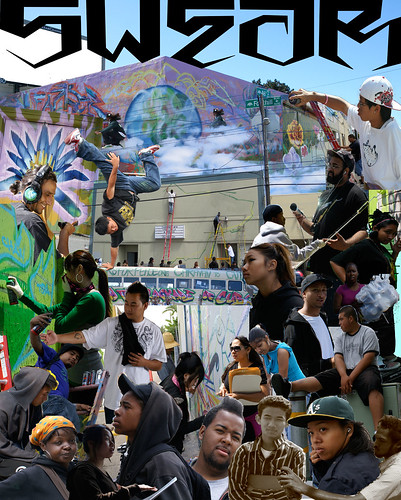PLEASE NOTE, THE COMMUNITY REJUVENATION PROJECT WEBSITE HAS MOVED TO A NEW PLATFORM! FOR THE LATEST UPDATES ON CRP, PLEASE VISIT www.CRPBayArea.org.
(Oakland, CA) – Oakland-based muralist collective Community Rejuvenation Project (CRP) today announced the roll-out of its newly revised, revamped and significantly upgraded website, www.CRPBayArea.org. Designed by Adriel Luis of Drzzl.com, the new site boasts a new look which is less-cluttered and more user-friendly, while adding much more content overall.
“It’s a brand new day for CRP. We’ve got this new thing and it’s gonna be fly,” said CRP founder and Director Desi WOME. Not only does the streamlined look reflect the professional and institutional growth of CRP since its inception in 2007, but “We answer all your questions about who CRP is, and what we do,” Desi explained.
“The new website makes it much easier to tap into CRP and get involved with programming and events. This will help us grow our community base even more. People and organizations can now plug in at every level, from pavement to policy, and be a part of what we’re building,” he added.
New features include:
Designer Luis “took a personal interest in the site and CRP’s work, and worked with us throughout the long and arduous process of giving the entire website an image makeover, as well as shifting the platform from Blogspot to WordPress,” Desi noted. The more sophisticated platform, he said, allows the website to be more than a blog and to maintain a professional appearance while providing an overview of CRP’s past and present endeavors.
The new website also marks the official debut of CRP’s new logo, which has already made some cameo appearances on a wall near you. Get used to seeing a lot more of this logo, which is going to figure prominently in CRP’s expanded merchandise line -- coming Spring 2013!
For more information, visit www.CRPBayArea.org.
“It’s a brand new day for CRP. We’ve got this new thing and it’s gonna be fly,” said CRP founder and Director Desi WOME. Not only does the streamlined look reflect the professional and institutional growth of CRP since its inception in 2007, but “We answer all your questions about who CRP is, and what we do,” Desi explained.
“The new website makes it much easier to tap into CRP and get involved with programming and events. This will help us grow our community base even more. People and organizations can now plug in at every level, from pavement to policy, and be a part of what we’re building,” he added.
New features include:
- New staff and artist bios
- Featured artist section—highlights a CRP artist
- Easy-to-access pull-down windows for CRP services—mural tours, workshops, community clean-up, live painting, consulting, etc.
- New galleries, including a compilation of murals painted over the last five years which detail CRP’s breadth of scope, range of expression, and artistic and personal growth
- Descriptions of current and past campaigns, with photo illustrations
- New blog updates and Op-Eds
- Sponsorship opportunities and donation levels
- Policy statements—outlines CRPs position on such issues as abatement and public art
Designer Luis “took a personal interest in the site and CRP’s work, and worked with us throughout the long and arduous process of giving the entire website an image makeover, as well as shifting the platform from Blogspot to WordPress,” Desi noted. The more sophisticated platform, he said, allows the website to be more than a blog and to maintain a professional appearance while providing an overview of CRP’s past and present endeavors.
The new website also marks the official debut of CRP’s new logo, which has already made some cameo appearances on a wall near you. Get used to seeing a lot more of this logo, which is going to figure prominently in CRP’s expanded merchandise line -- coming Spring 2013!
For more information, visit www.CRPBayArea.org.






















